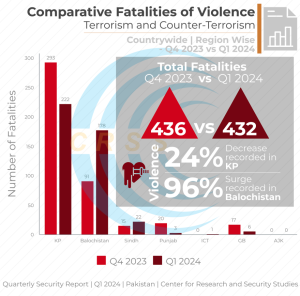The education system in Balochistan has all the anomalies in the supply and demand of education that one can think of. Lack of schools, poor infrastructure, gender disparity, high dropouts, and lack of teachers characterize the education system of the largest province of Pakistan. Around 70 percent of children in Balochistan in the primary and secondary school age group are out of school. Though the education system in Pakistan has officially been declared under crisis, with 26 million children out of school, the condition of Balchistan far surpasses the general sorry state of the nation.
Education deprivation is also highly gendered, with around 78 percent of girls out of school compared to 63 percent of boys. In rural Balochistan, the condition is much more alarming, given that less than 2 percent of women are known to be literate.
On the supply side, provisions for education and schooling are practically absent. In terms of infrastructure, the majority of the government schools lack basic access to electricity. The schools do not even have boundary walls, subjecting students to incidences of vandalism, theft, and threat to students’ safety. Moreover, the children going to these schools are bereft of basic amenities like functioning toilets and potable water.
The lack of provisions for girls, like separate toilets or, for that matter, even single-functioning toilets, in the already conservative society of Balochistan further jeopardizes the already bleak scope of girl education. This results in dropping out of a large number of girls in primary classes when they start menstruating.
The region also suffers from excessive teacher absenteeism. Given its troubled political past, many teachers have been killed or were forced to flee away for their lives and security. As per the ASER 2019 report, 28 percent of government schools in Balochistan do not have the required number of teachers. This contributes to overcrowding of classrooms and poorer learning outcomes.
The problem is not only of availability, accessibility, and affordability of education; it also expands to include the quality of education. There are three factors that can be majorly identified for the pathetic condition of the education system in Balochistan. First is patronage politics, which broadly results in faulty planning and resource allocation in education. The merit-based recruitment system has proven to be dysfunctional as the system is run by the politics of special interests. Shortage of trained teachers in Balochistan is a very crucial challenge. Teacher recruitment are often delayed leading to schools sans teachers. And when they are hired, teachers are often under-qualified, leading to further deteriorating education outcomes.
Second, the community has no voice. There are intermediaries between citizens and their elected ‘representatives’, namely tribal lords, religious leaders, and crony capitalists. As per a report, “poverty, tribalism, armed conflict, and a hybrid democracy have effectively dis-empowered citizen voice in Balochistan”.
Third, there exists no understanding of ‘quality’ education, as rote learning is considered a hallmark of good education. Due to the broken state-citizen relationship, there is virtually no role of citizens in the state’s decisions related to curriculum, which are often outdated.
The condition of education further deteriorated due to constant natural disasters faced by the region, including floods and earthquakes. As and when the school infrastructure got damaged, no swift rehabilitation action was taken. As per independent reports, after the 2022 floods, over 5,500 schools were destroyed, out of which only 50 have been repaired since then. Consequently, students find themselves studying under tents, in make-shift schools, and in scorching heat without any basic amenities.
The supply-side solutions are simple and straightforward and are no rocket science to be understood or executed by the ruling class. The solution lies in expanding investment in school infrastructure, updating curricula, and ensuring transparent hiring of quality teachers. Most importantly, building toilets and potable water facilities in the schools. Though UNICEF & EU are supporting the Balochistan Basic Education Program to bring girls back to school, it is a long journey that requires gradual organic change, breaking the shackles of years of underdevelopment and a conservative mindset. The government needs to take responsibility for the sorry state of affairs in the province and take swift action to provide basic infrastructure for improving its education outcomes. The current generation of Balochistan, denied of capabilities in the field of education, would further push back the goals of human development and sustainable development goals, along with crucial goals of poverty alleviation.
